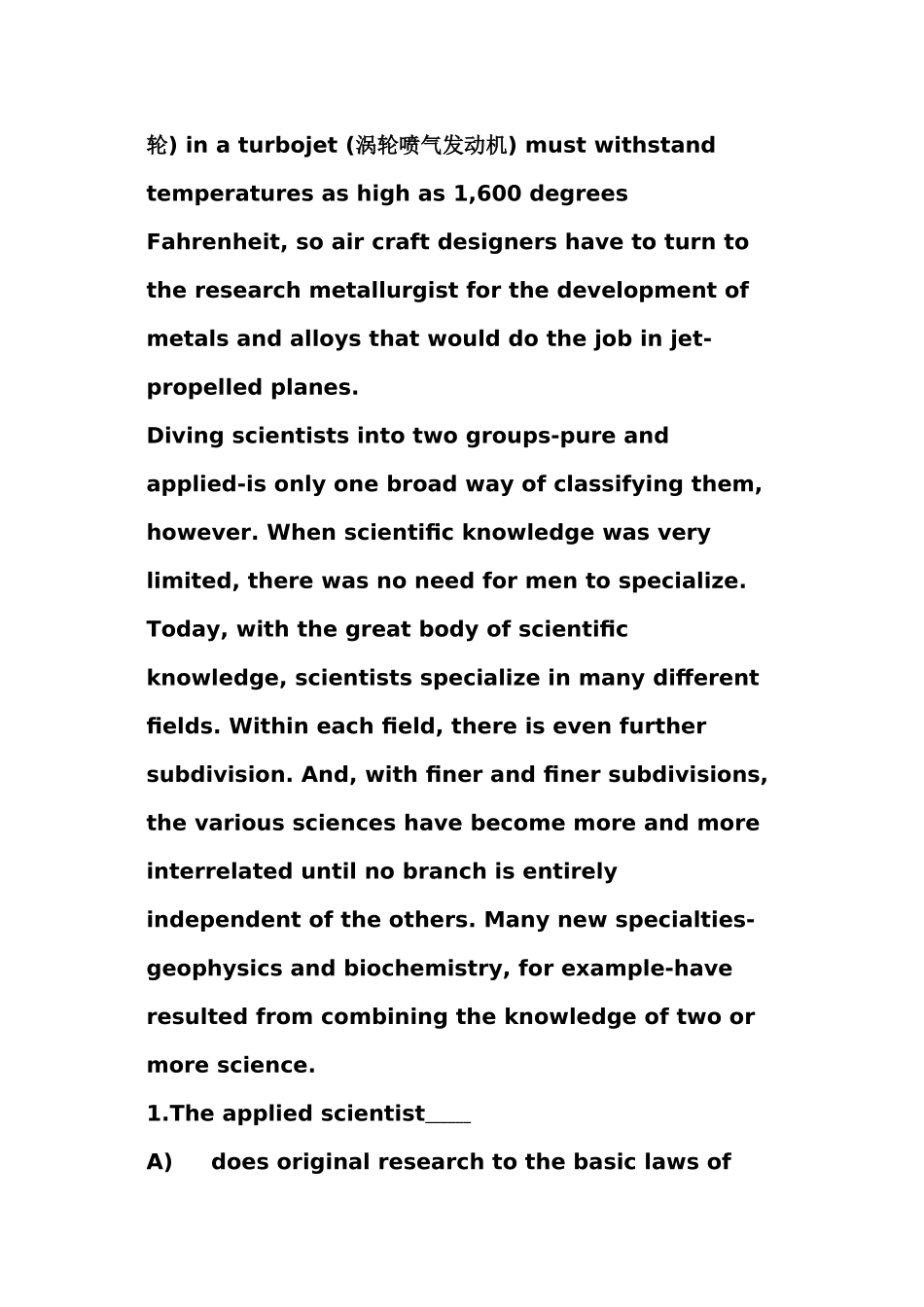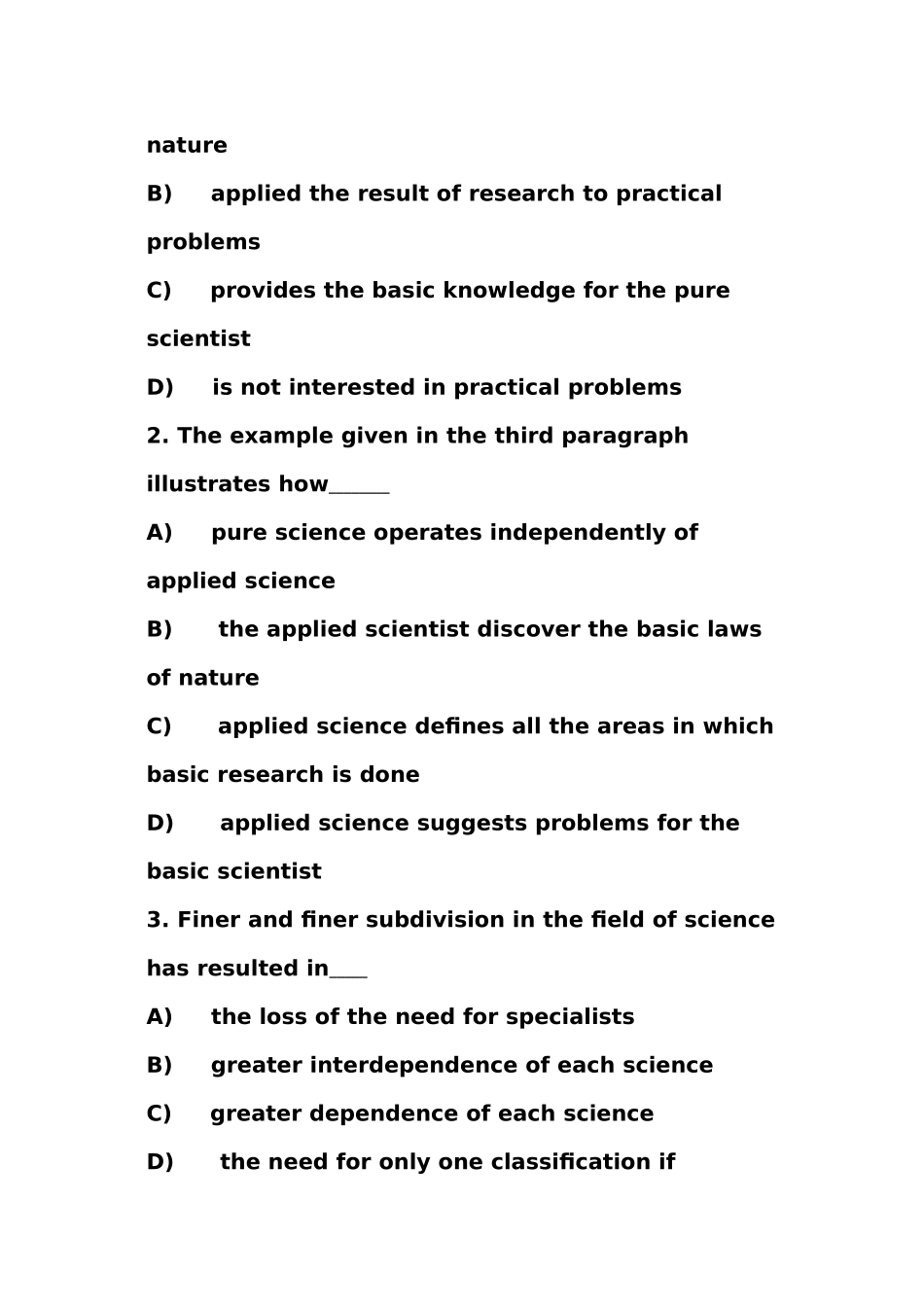英语四级阅读练习及答案Passage One:As the horizons of science have expended, two main groups of scientists have emerged. One is the pure scientist, the other, applied scientist. The pure or theoretical scientist does original research in order to understand the basic laws of the nature that govern our world. The applied scientist adapts this knowledge to practice problems. Neither is more important than the others, however, for the groups are very much related.Sometimes, however, the applied scientist finds the “problems” for the theoretical scientist to work on. Let’s take a particular problem of the aircraft industry: heat-resistant metals. Many of the metals and alloys that perform satisfactorily in car cannot be used in a jet-propelled (喷气推进式) plane, New alloys must be used, because the jet engine operates at a much higher temperature than an automobile engine. The turbine wheel (涡轮) in a turbojet (涡轮喷气发动机) must withstand temperatures as high as 1,600 degrees Fahrenheit, so air craft designers have to turn to the research metallurgist for the development of metals and alloys that would do the job in jet-propelled planes.Diving scientists into two groups-pure and applied-is only one broad way of classifying them, however. When scientific knowledge was very limited, there was no need for men to specialize. Today, with the great body of scientific knowledge, scientists specialize in many different fields. Within each field, there is even further subdivision. And, with finer and finer subdivisions, the various sciences have become more and more interrelated until no branch is entirely independent of the others. Many new specialties-geophysics and biochemistry, for example-have resulted from co...


